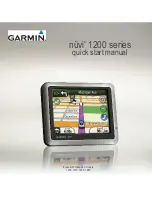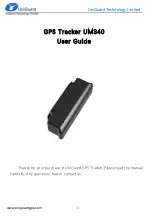
10
LA000507G © 2006 Navman New Zealand. All rights reserved. Proprietary information and specifications subject to change without notice.
4.1.4 External antenna voltage
DC power is supplied to the external antenna through the antenna power input pad (VANT).
The receiver does not use this supply. The DC supply to the RF connection does not current
limit in the event of a short circuit. Reference designs for antenna current limit are available in
the Jupiter 20 Integrator’s manual (LA000508).
The external antenna characteristics are as follows:
voltage (typ): 3.3 V
voltage max: 12 V
current max: 100
mA
Warning: if the antenna or its cable develops a short circuit and the external antenna
current is not limited, the GPS receiver will experience permanent damage.
4.1.5 RF (Radio Frequency) input
RF input is 1575.42 MHz (L1 Band) at a level between –135 dBm and –152 dBm into a 50 ohm
impedance. This input may have a DC voltage impressed upon it to supply power to an active
antenna. The maximum input return loss is –9 dB.
4.1.6 Antenna gain
The receiver will operate with a passive antenna of unity gain. However, GPS performance
will be optimum when an active antenna is used. The gain of this antenna should be in the
range of 20 dB to 30 dB.
4.1.7 Burnout protection
The receiver accepts without risk of damage a signal of +10 dBm from 0 to 2 GHz carrier
frequency, except in band 1560 to 1590 MHz where the maximum level will be –10 dBm.
4.1.8 Jamming performance
The typical jamming performance of the receiver based upon a 3 dB degradation in C/N
0
(Carrier to Noise power ratio) performance is shown in Table 4‑2. This is with reference to the
external antenna.
Frequency MHz
Jamming signal
power dBm
1400
–19
1425.42
–16
1530
–27
1555
–69
1575.42
–114
1625.42
–33
1725.42
–19
Table 4-2: Typical jamming performance
4.1.9 Flash upgradability
The firmware programmed in the Flash memory may be upgraded via the serial port. The
user can control this by pulling the Serial BOOT pad (3) high at startup, then downloading the
code from a PC with suitable software (e.g. SiRFFlash). In normal operation this pad should
be left floating for minimal current drain. It is recommended that in the user’s application, the
BOOT pad is connected to a test pad for use in future software upgrades.
4.1.10 Reset input
This active low input (pad 22) allows the user to restart the software from an external signal.
It is also used to initiate a ‘push‑to‑fix’ navigation cycle. In normal operation this pad should
be left floating or activated by an open drain driver. Active pull‑up is not recommended.



































